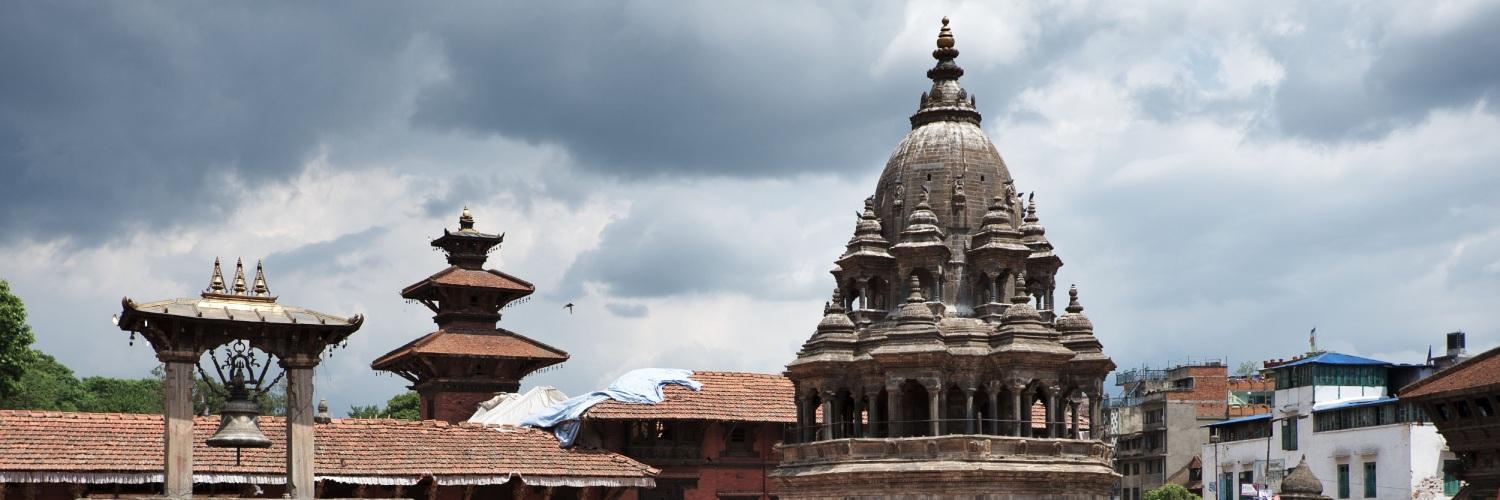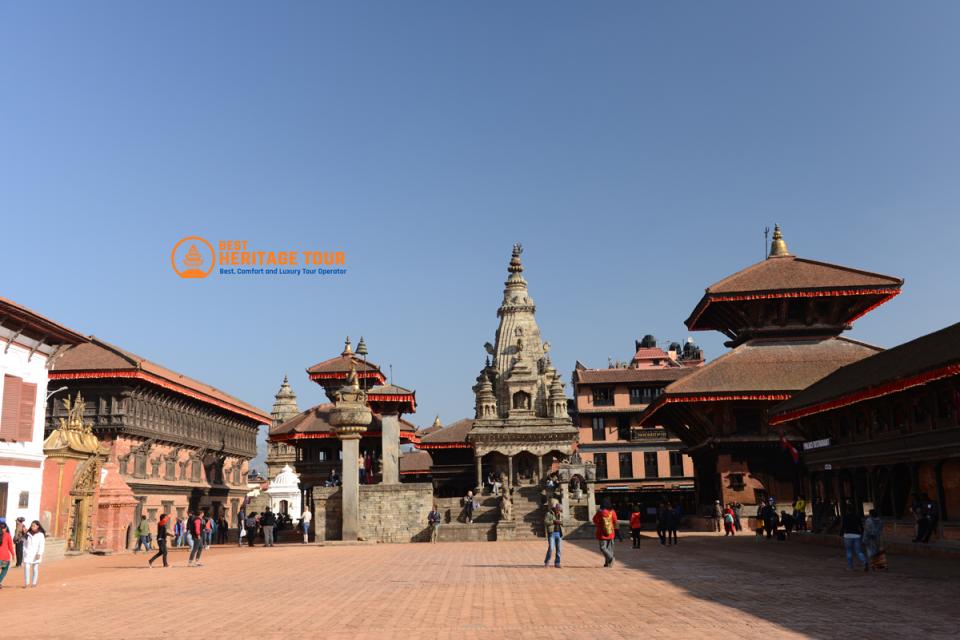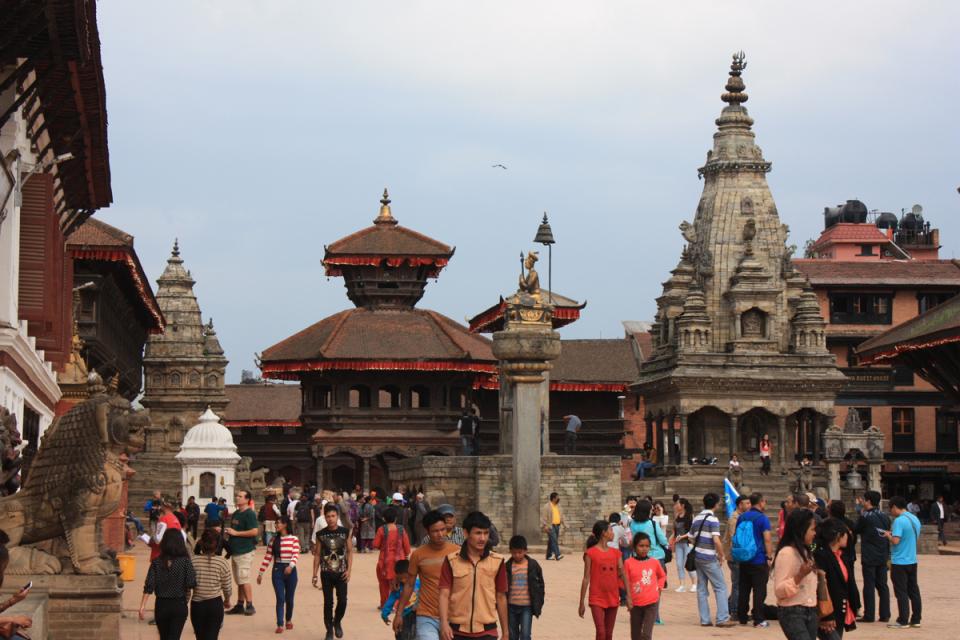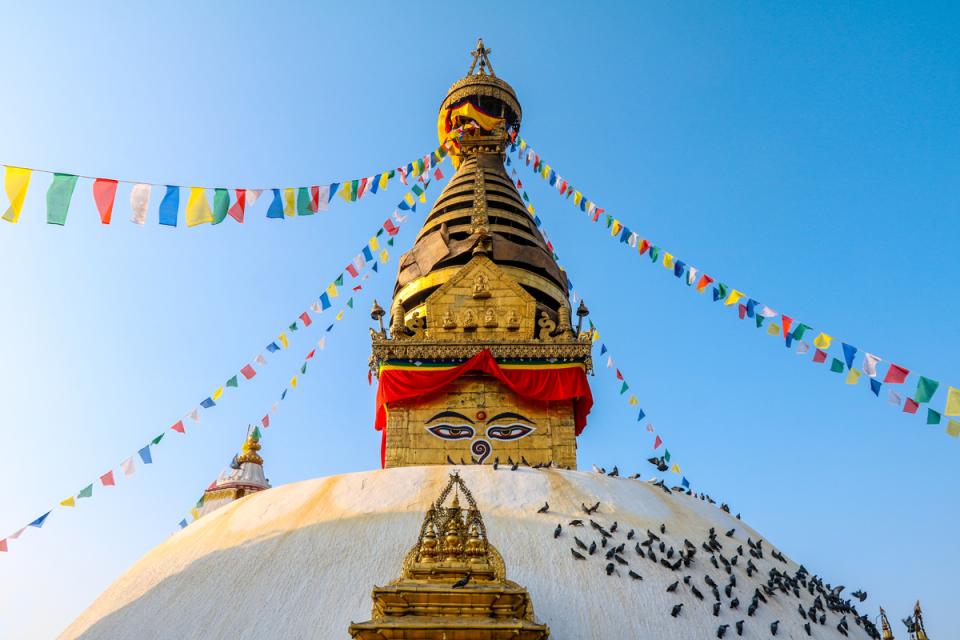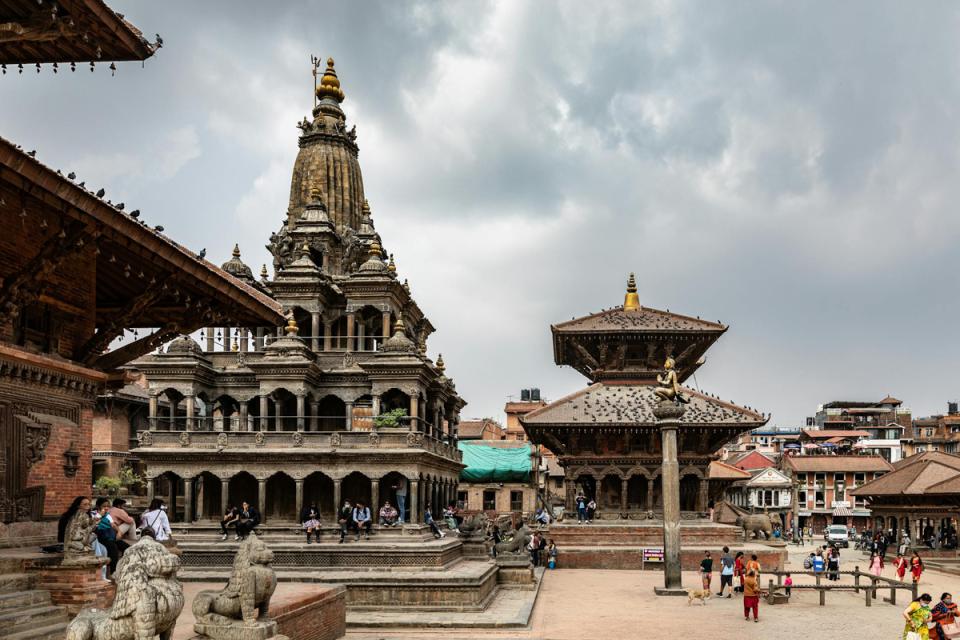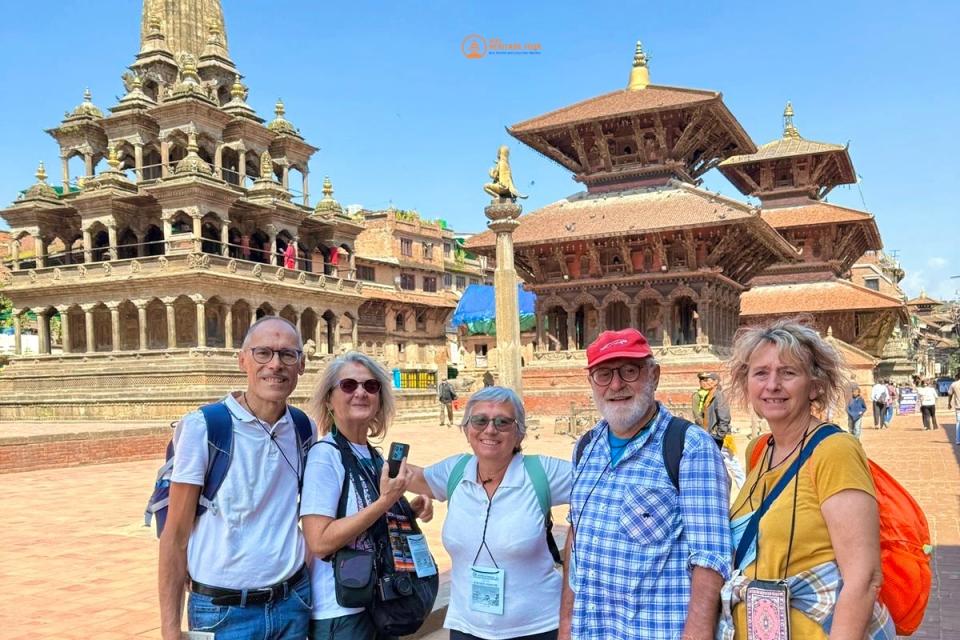Step into the heart of the Kathmandu Valley and you’ll find yourself surrounded by echoes of ancient royalty, intricate wood carvings, and spiritual rituals that have stood the test of time. In this culturally rich region of Nepal, three magnificent palace squares - Kathmandu Durbar Square, Patan Durbar Square, and Bhaktapur Durbar Square - stand as timeless testaments to the Valley’s golden age.
Each of these UNESCO World Heritage Sites offers a distinct glimpse into the artistry, architecture, and history of Nepal’s Malla period. More than mere monuments, they are vibrant spaces where festivals unfold, deities are worshipped, and artisans continue centuries-old crafts.
In this guide, we’ll walk you through each of these cultural marvels and help you plan your perfect Durbar tour in Kathmandu - whether you're a tourist, a spiritual seeker, or a curious explorer.
What is a Durbar Square? A Historical Overview
The word Durbar means “palace” in Persian, and in the Nepali context, it refers to royal courtyards built during the Malla dynasty (12th - 18th century). Each of the three city-states of the Kathmandu Valley- Kathmandu, Patan, and Bhaktapur, boasted its own Durbar Square as the ceremonial and administrative heart of the kingdom.
These squares served as arenas for royal coronations, festivals, public speeches, and worship. Over time, they became an architectural and cultural showcase of Newar civilization, blending Hindu and Buddhist elements into cohesive urban masterpieces.
Kathmandu Durbar Square: A Living Museum of Royal Splendor
Kathmandu Durbar Square, also known as Hanuman Dhoka Durbar Square and locally famous as Basantapur, is the historic heart of the ancient city of Kathmandu. It served as the royal palace for centuries, playing a central role in the political, cultural, and religious life of the Kathmandu Valley.
Historical Background
The foundation of Kathmandu Durbar Square dates back to the Licchavi period (4th to 8th century CE). However, its prominence as a royal and ceremonial center flourished during the Malla dynasty, particularly from the 12th to 18th centuries. Most of the existing structures were built between the 15th and 18th centuries, making it a layered palimpsest of Nepali history.
-
The Hanuman Dhoka Palace Complex was expanded and renovated extensively during the reign of King Pratap Malla (1624-1674), one of Kathmandu's most art-loving and intellectual monarchs. He introduced many of the ornate gates, courtyards, and statues that survive today.
-
Later, King Prithvi Narayan Shah, who unified Nepal in the mid-18th century, used the square as his royal residence after conquering Kathmandu in 1768.
This Durbar Square remained the political center of Nepal until the Shah kings moved to Narayanhiti Palace in the 20th century.
Top Attractions in Kathmandu Durbar Square
1. Hanuman Dhoka Palace Complex
Once the official royal residence, this sprawling palace complex features courtyards, temples, throne halls, and beautifully carved wooden balconies. The complex derives its name from the Hanuman statue - a red-clothed monkey god placed by King Pratap Malla in 1672 to guard the entrance. Key highlights include Nasal Chowk, Basantapur Tower, and the coronation throne room.
2. Kumari Ghar (House of the Living Goddess)
This sacred building is the residence of the Kumari, a young prepubescent girl worshipped as a living incarnation of the goddess Taleju. The building is an exquisite example of Newar woodcraft, with ornate windows and lion guardians at the entrance. Tourists often catch a rare glimpse of the Kumari through the upper-floor window.
3. Taleju Temple
Built in 1564 by Mahendra Malla, this towering, triple-roofed temple stands over 35 meters tall. It’s dedicated to Taleju Bhawani, the Malla royal family’s tutelary deity. Though it's closed to the public most of the year, it's opened during Dashain, drawing thousands of devotees.
4. Jagannath Temple
One of the oldest temples in the square (built in the early 16th century), Jagannath Temple is famous for its erotic wood carvings - an unusual and intriguing expression of tantric influence in Hindu architecture.
5. Kal Bhairav Statue
This massive stone statue, believed to date back to the 17th century, depicts Kal Bhairav, a fierce form of Shiva. In historic times, people took oaths before it because it was believed to strike liars dead - a divine lie detector of sorts.
6. Shiva-Parvati Temple
Perched on a red-brick platform, this double-roofed temple often charms visitors with its statues of Shiva and Parvati looking out from an upstairs window, symbolizing divine oversight of the square.
7. Kathmandu Durbar Square Museum
Housed within the palace, this museum contains relics, weapons, royal attire, and thrones from the Malla and Shah periods. It gives deep insight into Nepal’s monarchy, court rituals, and architecture.
Atmosphere & Experience
This square buzzes with life - worshippers offering marigolds, and vendors selling handicrafts. Visit during Indra Jatra to witness one of Kathmandu’s grandest street festivals.
Visitor Info
-
Entry Fee: NPR 1,000 for foreigners
-
Best Time to Visit: Early morning or late afternoon
-
Pro Tip: Dress modestly and avoid stepping on temple platforms.
Patan Durbar Square: The City of Artists and Temples
Patan Durbar Square, located in the city of Lalitpur, is considered the most artistically refined of the three Durbar Squares. Patan itself is the oldest among the Kathmandu Valley cities, with origins stretching back to the 3rd century BCE, possibly founded during the Kirat Dynasty. However, the Durbar Square as it exists today is largely a product of the Malla period, particularly during the 16th to 18th centuries.
Historical Background
Patan flourished under the Malla dynasty, when it became an epicenter of craftsmanship, Buddhist learning, and religious syncretism.
-
The Patan Palace Complex was built and expanded extensively during the reign of King Siddhi Narsingh Malla (ruled 1619-1661). He is credited with constructing the famed Krishna Mandir in 1637, a rare stone temple inspired by Indian Mughal styles but infused with local artistic elements.
-
Many of the intricately carved temples and courtyards were further embellished by his successors, including Yoganarendra Malla, under whom Patan reached its cultural zenith.
While Patan is home to both Hindu and Buddhist monuments, it’s especially noted for its Newar Buddhism, with monasteries (vihars) and stupas tucked throughout the old city.
Top Attractions in Patan Durbar Square
1. Krishna Mandir
Commissioned by King Siddhi Narsingh Malla in 1637, this three-story temple built entirely from stone is an architectural marvel. It features Shikhara-style spires and detailed carvings from the Mahabharata and Ramayana. Its uniqueness lies in its Indian-influenced structure within a Newar city.
2. Patan Museum
Regarded as one of South Asia’s finest, the Patan Museum is a treasure trove of Hindu and Buddhist bronze sculptures, ritual objects, and historical displays. Housed in a wing of the royal palace, it features restored courtyards and serene garden spaces.
3. Sundari Chowk and Tusha Hiti
This intricately designed royal courtyard is home to the Tusha Hiti, a sunken ceremonial bath believed to have had tantric significance. The detailed stonework, including guardian serpent motifs and water deities, reflects the spiritual refinement of the Malla kings.
4. Mul Chowk
One of the oldest courtyards in Patan Durbar Square, Mul Chowk was used for religious and royal ceremonies. It is surrounded by temples of Taleju Bhawani, the personal deity of the Mallas.
5. Golden Temple (Hiranya Varna Mahavihar)
This hidden gem of a Buddhist monastery dazzles visitors with its gold-plated facade, prayer wheels, and exquisite inner courtyard filled with statues and ritual tools. Founded in the 12th century, it is still in use by the local Newar Buddhist community.
6. Mahabouddha Temple
Dubbed the “Temple of a Thousand Buddhas,” this terracotta tower is inspired by Indian Buddhist architecture and is completely covered in tiles, each bearing a Buddha image.
7. Kumbheshwar Temple
Just a short walk from the square, this five-roofed Shiva temple is one of the oldest in Patan. Its sacred pond is believed to be connected to the holy lake Gosaikunda, making it a vital pilgrimage site during Janai Purnima.
Cultural Vibe
Unlike the hustle of Kathmandu, Patan feels more meditative. You’re likely to find artisans working with copper, silver, and stone in nearby alleys, keeping alive age-old traditions.
Visitor Info
-
Entry Fee: NPR 1,000
-
Ideal For: Photographers, art lovers, and seekers of peace
-
Pro Tip: Visit in the late morning for great lighting and fewer crowds.
Bhaktapur Durbar Square: Medieval Majesty Preserved
Bhaktapur Durbar Square, located in the eastern part of the Kathmandu Valley, is perhaps the most authentic and well-preserved of the three. Bhaktapur, or Bhadgaon, was an independent Malla kingdom until the unification of Nepal.
Historical Background
Bhaktapur rose to prominence in the 9th century during the Thakuri and early Malla periods, but most of its standing structures today were built during the 13th to 18th centuries, particularly under the rule of the Malla kings of Bhaktapur.
-
One of the most prolific builders was King Yaksha Malla (ruled 1428-1482), who is credited with laying the foundation of many of the city’s temples and palace complexes.
-
Later, King Bhupatindra Malla (ruled 1696-1722) turned Bhaktapur Durbar Square into a masterpiece of Newar urban planning and artistry. He commissioned the stunning 55-Window Palace and is often seen in statues depicted in anjali mudra (gesture of reverence) before the Nyatapola Temple.
-
The Nyatapola Temple, built in 1702, is Nepal’s tallest pagoda-style temple and remains structurally resilient even after multiple earthquakes, a testament to Newar engineering.
Unlike Kathmandu and Patan, Bhaktapur retained more of its medieval charm due to less modern development, making it a favorite among cultural travelers and photographers.
Top Attractions in Bhaktapur Durbar Square
1. 55-Window Palace (Pachpanna Jhyale Durbar)
Commissioned by King Bhupatindra Malla in the 18th century, this masterpiece of woodcarving features 55 intricately detailed windows lining the royal palace. It was once the administrative hub of the Bhaktapur kingdom.
2. Golden Gate (Lu Dhoka)
Considered one of the most beautiful gates in the world, the Golden Gate leads into the inner courtyard of the palace. It is lavishly adorned with deities like Kali and Garuda, flanked by mythical creatures and gold-plated flourishes.
3. Vatsala Temple
Built in the 17th century, this temple showcases beautiful Shikhara-style stone architecture and a bell known as the “Bark of the Dog,” which once rang to alert the people during ceremonies or danger.
4. Nyatapola Temple
Standing tall at 30 meters, the Nyatapola Temple is the tallest pagoda in Nepal. Built in 1702 by King Bhupatindra Malla, it is dedicated to the goddess Siddhi Lakshmi and guarded by powerful stone figures at each level - from wrestlers to elephants, lions, and deities.
5. Bhairabnath Temple
This temple is dedicated to Bhairav, the terrifying aspect of Shiva. It houses a wooden chariot used during Bisket Jatra, one of Bhaktapur’s most dramatic festivals. The blend of fear and reverence defines the spiritual tone of the square.
6. Pashupatinath Temple (Bhaktapur)
A smaller version of the famed Pashupatinath Temple in Kathmandu, this shrine represents Bhaktapur’s own connection to Shiva and tantric traditions. It’s a quiet, rarely visited temple, perfect for spiritual reflection.
7. Pottery Square and Dattatreya Square (nearby)
While not inside the main square, both these areas are walking-distance extensions of Bhaktapur’s cultural legacy. Pottery Square is alive with artisans shaping clay by hand, and Dattatreya Square features temples said to be carved from a single tree.
Cultural Ambiance
In Bhaktapur, you'll experience authentic local life: women drying grains, men shaping clay pots. You can also savor the authentic Juju Dhau (king of Yogurt).
Visitor Info
-
Entry Fee: NPR 1,500
-
Pro Tip: Combine with a visit to Pottery Square and Dattatreya Square for a full-day experience.
Comparison: Which Durbar Square Should You Visit?
|
Feature |
Kathmandu |
Patan |
Bhaktapur |
|---|---|---|---|
|
Vibe |
Lively & Spiritual |
Artistic & Calm |
Traditional & Authentic |
|
Best For |
First-time visitors |
Art lovers |
History buffs |
|
Key Highlight |
Kumari & Royal Palace |
Krishna Mandir & Museum |
Nyatapola Temple & Palace |
|
Ideal Visit Time |
Morning/Evening |
Late Morning |
Morning |
Recommendation: For a complete experience, visit all three with a guided Durbar tour in Kathmandu.
How to Plan Your Durbar Tour in Kathmandu
-
Getting There: Taxis and public buses from Thamel or Boudhanath can take you to each square.
-
Tour Duration: 2-3 hours per square; a full-day trip if covering all three.
-
Best Season: October to April for dry weather and clear views.
-
Guides: Local guides are invaluable for understanding iconography, mythology, and local legends.
For a comfort and best experience, go with Best Heritage Tour.
Final Thoughts: Discover Nepal’s Cultural Soul
The Durbar Squares of Kathmandu, Patan, and Bhaktapur are not just architectural marvels - they are living narratives of Nepal’s royal, spiritual, and artistic history. Each offers a unique perspective, and together, they form the cultural backbone of the Kathmandu Valley.
A visit to Nepal isn’t complete without immersing yourself in the grandeur, legends, and craftsmanship of these sacred squares. Let the timelessness of Durbar Squares reveal to you the true essence of Nepal.
Book Your Durbar Square Tour Today with Best Heritage Tour
Explore Kathmandu, Patan, and Bhaktapur with experienced local guides who bring centuries of history to life.
Phone/WhatsApp/Viber: +9779851149197 / +9779810043046
Email: bestheritagetour@gmail.com / info@bestheritagetour.com
Website: www.bestheritagetour.com
Location: Thamel Marg, Kathmandu, Nepal
Step into the past and discover Nepal’s living heritage - only with Best Heritage Tour.
Author: Best Heritage Tour
Date: 16th June, 2025

